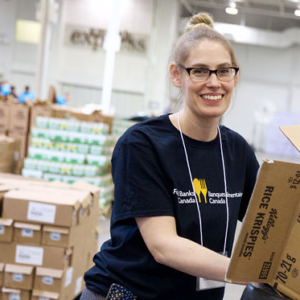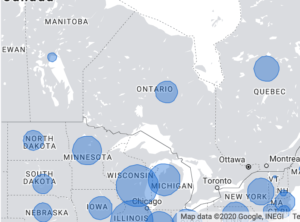Video by Reedah Hayder
Multimedia by Samreen Maqsood
By Maggie Feldbloom
The COVID-19 pandemic has placed incredibly high pressure on food banks in the midst of higher unemployment and an increased need for food.
The demand is clear – 6100 people have accessed food banks in June of 2020, compared to 2000 this past February, according to Daily Bread Food Bank.
St. Paul’s Food Bank in Pickering, Ont. also experienced a large change in demand, recording a 21 per cent increase in people using the food bank compared to last year.
Story continues below infographic
However, COVID-19 has presented its own set of challenges that prevent food banks from being able to adapt to the challenge.
The solution isn’t as simple as to increase volunteers; the pandemic also prevents the possibility of having an excess of volunteers in the same room during the circumstances.
St. Paul’s director of volunteers, Margaret Jocz, says that many of their volunteers had to be sent home because of the risk presented by COVID-19.
Additionally, some of their volunteers had to be sent home because of the risk.

According to Bayley Nargang, a Communications Manager for a food bank in Toronto, things are different for them, saying people have been stepping up to the plate by volunteering their time during a difficult period.
“We’ve had an influx of volunteers at this time,” said Nargang. “People seem to want to genuinely give back and support.”
Food banks and affiliated organizations have been rapidly responding to this immediate need as the demand becomes greater.
Increased donations have been coming in to help with the issue according to iate.ca, which is currently fundraising to feed those in need during the pandemic.
As of Oct. 18, they have raised over 125 million dollars for the cause in response to the pandemic.




Leave a Reply